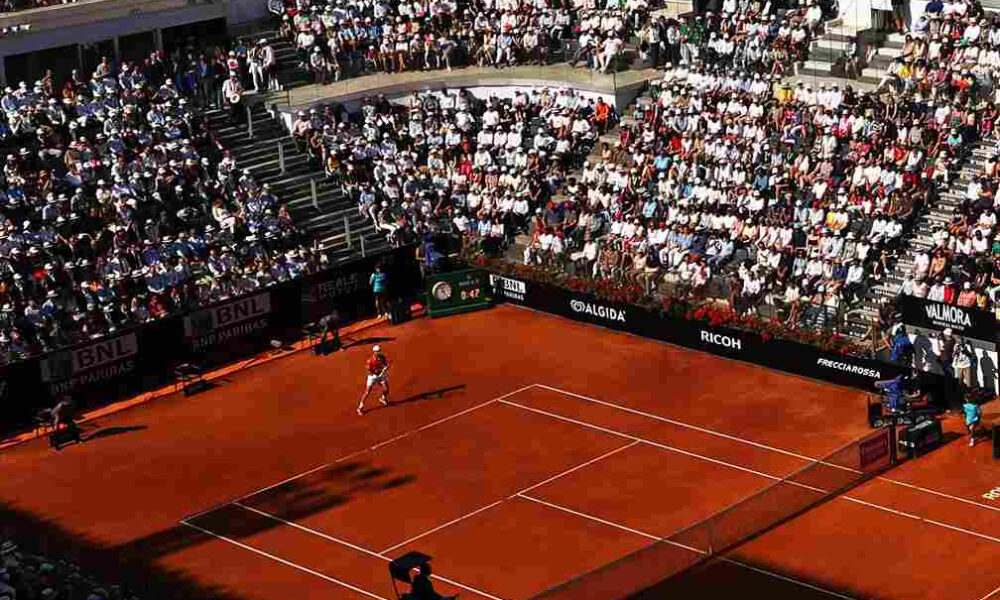Introduction
Among the most prestigious clay-court tournaments in the world, the Italian Open—also known as the Internazionali BNL d’Italia—is a true gem in the professional tennis calendar. Held annually in the historic city of Rome, Italy, this tournament is not only a crucial warm-up event before the French Open but also a celebration of sporting excellence, heritage, and grandeur.
Over the decades, the Italian Open has witnessed fierce rivalries, legendary performances, emotional upsets, and the rise of numerous tennis stars. Whether it’s the awe-inspiring backdrop of the Foro Italico, the roaring Italian crowd, or the electric matches under the Roman sun, this tournament holds a unique place in tennis history.
This blog explores everything you need to know about the Italian Open—from its rich history and format to iconic champions, 2025 highlights, cultural impact, and what makes it such a revered sporting spectacle.
1. History and Origins
The Italian Open traces its origins back to 1930, when it was first held in Milan. The goal was to create a premier clay-court tournament for European players, giving them a stage to showcase their talent outside of Paris. Initially a men-only event, it later welcomed women competitors and evolved into a full-fledged ATP Masters 1000 and WTA 1000 tournament.
In 1935, the tournament was moved to Rome, where it found its permanent home in the picturesque Foro Italico, a sports complex built under Mussolini’s regime. Despite disruptions during World War II, the Italian Open gained prestige post-war and steadily became one of the biggest events outside of the Grand Slams.
2. Significance in the Tennis Calendar
The Italian Open is a key event in the European clay-court season, leading up to Roland Garros (French Open).
Here’s why it’s important:
- ATP Masters 1000 and WTA 1000 Status: These are the highest-tier tournaments after the Grand Slams.
- Preparation for the French Open: Many top players use it to fine-tune their clay-court game.
- High Prize Money and Ranking Points: It offers a hefty purse and significant ATP/WTA ranking points.
- Prestige and Legacy: Winning in Rome is a matter of honor for players due to the tournament’s long-standing history.
3. The Venue – Foro Italico
The Foro Italico is more than just a sports venue—it’s a living museum. With white marble statues, ancient Roman architecture, and open-air courts, it provides one of the most stunning backdrops in all of tennis.
The centerpiece is the Stadio Centrale, the main court, which can seat over 10,000 spectators. The atmosphere is electric, especially when Italian players take the court or when global stars like Nadal, Djokovic, or Swiatek are in action.
4. Tournament Format
- Men’s Tournament (ATP Masters 1000)
- Singles and Doubles
- 96-player singles draw (expanded in 2023)
- Played over 12 days in May
- Women’s Tournament (WTA 1000)
- Singles and Doubles
- Similar draw and format to the men’s
- Played concurrently with the men’s event
The tournament follows a best-of-three sets format, and both singles and doubles matches are played on outdoor clay courts.
5. Iconic Champions
Men’s Singles Legends:
- Rafael Nadal: With 10 titles, he is the undisputed King of Rome. His mastery on clay has thrilled fans for nearly two decades.
- Novak Djokovic: A multiple-time champion, Djokovic has had several memorable battles against Nadal here.
- Björn Borg, Ivan Lendl, and Andre Agassi are other notable names who’ve conquered Rome.
Women’s Singles Legends:
- Chris Evert and Martina Navratilova dominated during their era.
- Serena Williams and Maria Sharapova brought glamour and grit.
- In recent years, Iga Świątek has emerged as a modern-day clay queen.
6. Italian Open 2025: Highlights & Recap
The 2025 edition of the Italian Open was one of the most dramatic and memorable in recent years.
Key Highlights:
- Men’s Final: A thrilling clash between Carlos Alcaraz and Jannik Sinner captivated the audience. Sinner, buoyed by a home crowd, played with passion, but Alcaraz’s variety and agility on clay saw him lift the trophy for the first time.
- Women’s Final: Iga Świątek defended her title with poise, defeating Aryna Sabalenka in straight sets. Her dominance on clay remains unmatched.
- Italian Hope: Jasmine Paolini made it to the quarterfinals, receiving massive support and media attention.
- Doubles Action: The men’s and women’s doubles categories featured exciting new pairings and upsets, proving that doubles tennis is alive and thriving.
7. Italian Players and National Pride
Italy has seen a resurgence in tennis talent over the last decade:
- Matteo Berrettini
- Jannik Sinner
- Lorenzo Musetti
- Jasmine Paolini
- Camila Giorgi
The rise of these stars has made the Italian Open a national festival, with fans packing the stands to cheer their homegrown heroes. Tennis in Italy is now more popular than ever.
8. Cultural Experience and Fan Engagement
The Italian Open is not just a sporting event; it’s a cultural celebration.
- Food and Wine: Fans enjoy authentic Italian cuisine right at the venue.
- Fashion: The tournament attracts celebrities, influencers, and fashionistas.
- History and Tourism: Visitors often combine match days with sightseeing trips to the Colosseum, Vatican, and Trevi Fountain.
- Night Matches: Under the Roman sky, with floodlights and buzzing crowds, night sessions have a magical atmosphere.
9. Media Coverage and Global Reach
The Italian Open enjoys:
- Live broadcast in over 150 countries
- Millions of digital viewers
- Coverage from ESPN, Eurosport, Sony Sports, and Tennis TV
- Extensive social media highlights and player interviews
Its global appeal continues to grow thanks to digital streaming and multi-language coverage.
10. Challenges and Innovations
In recent years, the tournament organizers have introduced:
- Hawk-Eye Technology: Improving fairness and accuracy.
- Sustainability Initiatives: Eco-friendly packaging, waste management, and promoting green transportation.
- Fan Zones and VR Experiences: To enhance engagement, especially among youth.
- Expanded Draw: More players now get the chance to compete at a high level.
Challenges such as weather delays (common with clay events) and crowd control are managed with precision thanks to technological upgrades and professional planning.
11. Comparison with Other Clay Tournaments
The Italian Open is one of the “Big Three” clay-court tournaments:
| Tournament | Location | Prestige Level |
| Monte Carlo Masters | Monaco | High, but less than Rome |
| Italian Open (Rome) | Italy | Top-tier, ATP 1000/WTA 1000 |
| French Open | Paris, France | Grand Slam – The pinnacle |
Rome holds a special place as the stepping stone to the French Open, offering a strong clue about who might triumph at Roland Garros.
12. Looking Ahead: The Future of the Italian Open
With continued investment, expanding fan base, and digital innovation, the Italian Open’s future looks incredibly promising. Key areas of growth include:
- Hybrid ticketing models (physical + virtual)
- Expanded junior events and tennis academies
- Celebrity involvement and influencer partnerships
- Better accessibility for global fans
The tournament is set to be a powerhouse in clay-court tennis for generations to come.
Conclusion
The Italian Open is more than a tennis tournament—it’s an institution, a festival, and a symbol of Italy’s love for sport and style. For players, it’s a test of clay-court prowess. For fans, it’s an unforgettable blend of athleticism, passion, and Roman grandeur.
From Nadal’s dominance to Alcaraz’s emergence, from Serena’s power to Swiatek’s finesse, Rome has seen it all. As tennis evolves, the Italian Open continues to hold its charm, prestige, and importance in the sporting world.
Whether you’re a die-hard tennis fan or a curious traveler looking for your next adventure, the Italian Open is a spectacle you shouldn’t miss.




Legal Translation Dubai
translation services
english to arabic translation dubai
french translation dubai
document translation services
russian translation in dubai
marriage certificate translation